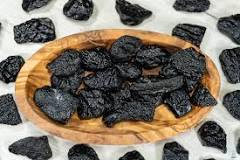
Tektite: Earth's Celestial Echo in Raw Crystal Form
Tektite—often known as the “stone from the sky”—is a mysterious and captivating material, formed during meteorite impacts deep within the Earth’s crust. With its obsidian-like lustre and cosmic origin, tektite carries extraordinary energy and ancient stories. For collectors, spiritual seekers, and admirers of raw crystal jewellery, tektite offers an intriguing blend of terrestrial and cosmic resonance.
Geological Profile: Composition, Formation & Sources
Tektites are natural glass formed when meteorites impact Earth, melting local silica-rich materials that are then ejected and rapidly cooled in the atmosphere. Unlike traditional crystals, they are amorphous—lacking internal crystalline structure, but possessing a glassy, often pitted or sculptural texture.
Key Geological Features:
-
Composition: Primarily silica (SiO₂), often mixed with aluminium oxide, iron, magnesium, other trace elements
-
Appearance: Black to dark brown, sometimes green or translucent; surfaces are characterised by aerodynamic forms and flowlines
-
Hardness: About 5–6 on the Mohs scale—so relatively durable, but softer than quartz
-
Major Provenance:
-
Moldavite, the most famous tektite, originates in the Czech Republic
-
Indochinites from Southeast Asia—found in Thailand, Laos, Vietnam
-
Australites from Australia
-
North American tektites—such as Georgia and Bediasites in the USA
-
Each tektite variation reflects its unique fiery formation and solidified flight path, making every raw specimen a mini cosmic artefact.

Energetic Meaning & Healing Qualities
Tektite is widely renowned for its powerful metaphysical vibrations:
-
Galactic Connection: Often used in astral work and meditation to enhance connection with cosmic consciousness
-
Aura Cleansing & Shielding: Believed to clear blockages, raise vibration, and provide energetic protection
-
Transformation & Empowerment: Encourages personal evolution, removes limiting energies, and supports spiritual awakening
Moldavite, in particular, is considered an accelerant of transformation, helping with emotional release and soul purpose alignment. Other tektites are regarded as stabilising conduits, gently integrating cosmic energies into daily life.
Raw Tektite: Aesthetic & Collector's Appeal
The raw, unpolished form of tektite reveals its dynamic formation—smooth aerodynamic shapes, pockmarked depressions, and rich dark hues. In mineral specimen necklaces and raw crystal jewellery, these natural forms convey authenticity and story.
Collectors and makers appreciate raw tektite for:
-
Its singular textures—no two pieces are the same
-
The visible evidence of its extraterrestrial origin
-
The blend of glass-like shine and tactile surface
Tektite’s distinct aesthetic complements both minimalist and statement designs, making it a compelling choice for crystal specimen rings, pendants, and bespoke handmade gemstone pieces.
Cultural Lore & Cosmic Legends
Tektite has long fascinated humanity, not only for its peculiar formation but for its seeming message from the stars. In ancient China, tektites were known as "lei gong mo" (inkstone of the thunder god), believed to be celestial ink spilled during cosmic battles. In various Southeast Asian traditions, Indochinite tektites were worn as talismans to ward off evil and enhance fertility.
Moldavite, the green tektite of Czech origin, holds a particularly mystical reputation. Legend says it is the stone of the Holy Grail, formed when a celestial emerald fell from the sky. Even today, Moldavite is said to catalyse spiritual awakening with such potency that wearers often report emotional surges, lucid dreams, or life-altering insights—a phenomenon dubbed the “Moldavite flush.”
Tektite vs Other Crystals
Unlike silicate-based minerals with defined crystal structures (e.g. quartz, tourmaline), tektite is non-crystalline and categorised as natural glass. Its energy is more expansive and interstellar, compared to the grounding quality of stones like hematite or the harmonising nature of amethyst.
Comparative insights:
-
Tektite vs Obsidian: Both are natural glasses, but obsidian is volcanic while tektite is extraterrestrial in origin.
-
Tektite vs Moldavite: Moldavite is a specific variety of tektite with a higher vibration and is often more expensive due to rarity.
-
Tektite vs Libyan Desert Glass: Both result from meteorite impact but differ in colour (LDG is yellow) and geographic origin.
Tektite’s rarity, backstory, and high vibrational field set it apart in the metaphysical world and the collector’s cabinet.
Use in Jewellery: From Raw Form to Sacred Adornment
In the world of mineral specimen jewellery, tektite holds a place of both reverence and creative inspiration. Left uncut, its aerodynamic lines and textured cavities provide visual depth and narrative—a tactile reminder of cosmic history.
Popular formats include:
-
Crystal specimen rings: A single raw piece mounted to honour its form
-
Mineral specimen necklaces: Pendant designs with minimal metal, showcasing the natural beauty
-
Handmade gemstone rings: Where tektite is paired with silver or brass to ground its celestial energy
Because of its matte texture and unique formation, tektite is ideal for minimalist, gender-neutral designs—favoured by both crystal lovers and modern aesthetes.

A Final Word
In the realm of raw crystal jewellery, tektite is unlike any other—a true interstellar artefact wrapped in the Earth’s embrace. For those drawn to its subtle pull, tektite offers more than adornment. It offers a shift, a remembrance, a cosmic call home.
Whether you are a spiritual seeker, a collector of celestial minerals, or simply someone who feels moved by form and story, tektite is a stone worth holding close. And when selected intuitively, it becomes more than jewellery—it becomes a companion for transformation.